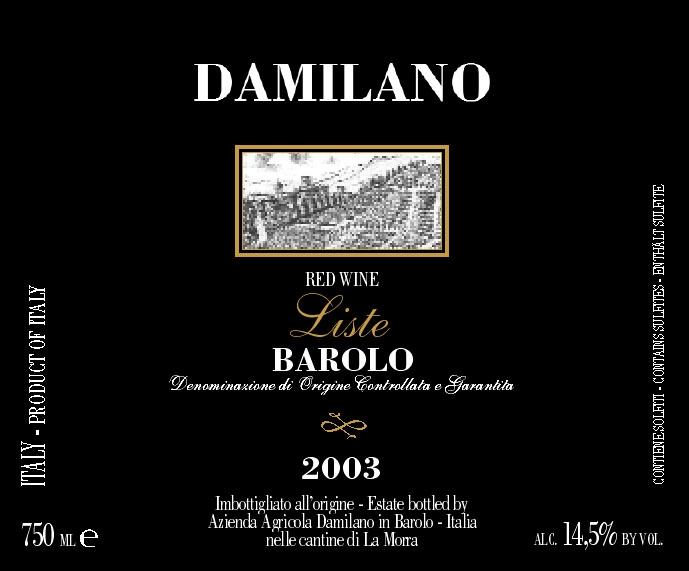2003 Barolo Nebbiolo
Damilano Liste Barolo is a captivating expression of the Nebbiolo varietal, hailing from the renowned Barolo region, celebrated for producing some of Italy's finest wines. This red wine showcases a medium body that balances elegance with depth, making it approachable yet complex. The acidity is pronounced, providing a bright and lively character that enhances its aging potential. Tannins are notably structured, lending a firm backbone that supports the wine's rich flavors. With a prominent fruit intensity, this wine reveals alluring notes of cherry, raspberry, and plum, intertwined with earthy undertones and hints of floral aromas. As a wonderful example of a Barolo, this vintage from 2003 exemplifies the region's artistry and dedication to winemaking, making it a superb choice for both collectors and enthusiasts alike.
Damilano Liste Barolo is a captivating expression of the Nebbiolo varietal, hailing from the renowned Barolo region, celebrated for producing some of Italy's finest wines. This red wine showcases a medium body that balances elegance with depth, making it approachable yet complex. The acidity is pronounced, providing a bright and lively character that enhances its aging potential. Tannins are notably structured, lending a firm backbone that supports the wine's rich flavors. With a prominent fruit intensity, this wine reveals alluring notes of cherry, raspberry, and plum, intertwined with earthy undertones and hints of floral aromas. As a wonderful example of a Barolo, this vintage from 2003 exemplifies the region's artistry and dedication to winemaking, making it a superb choice for both collectors and enthusiasts alike.




